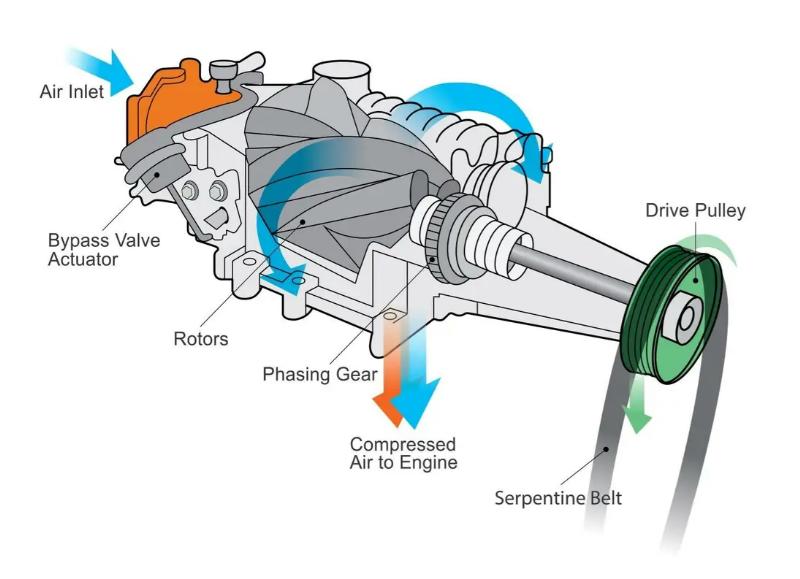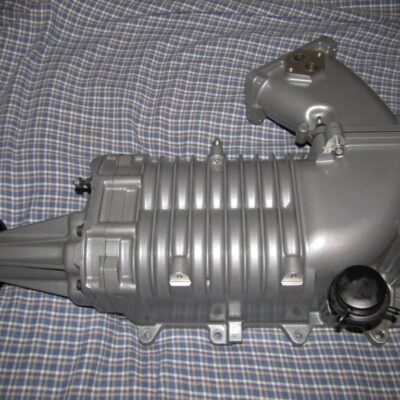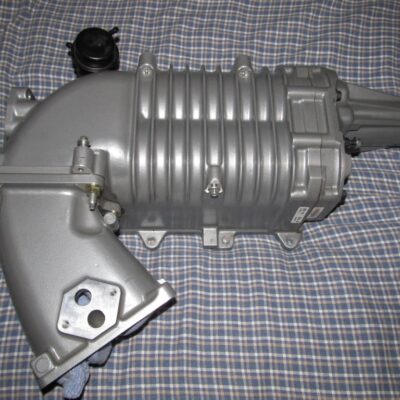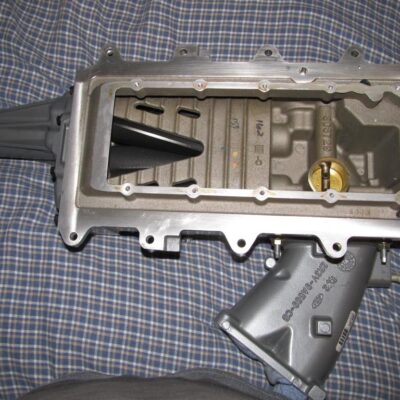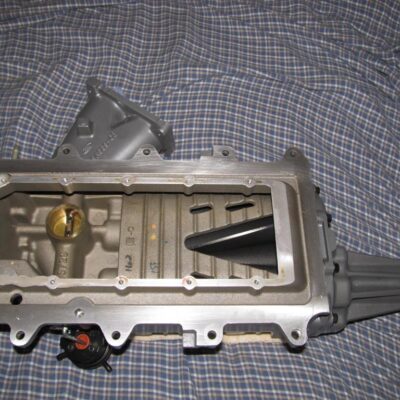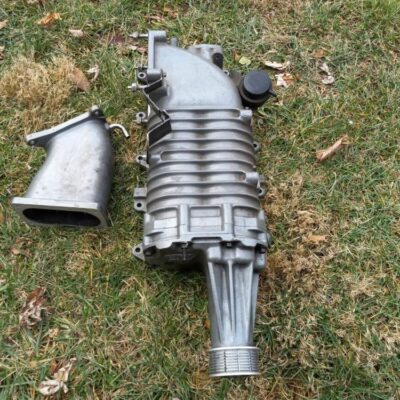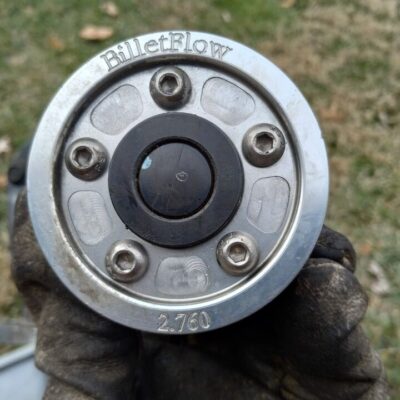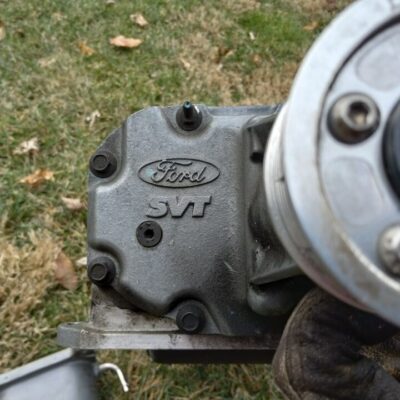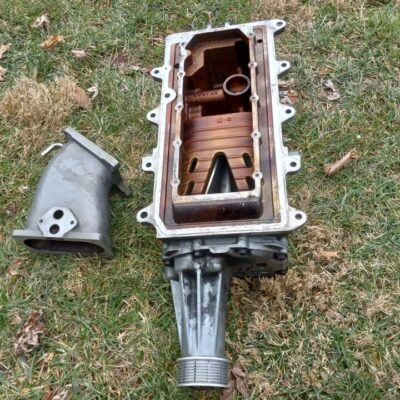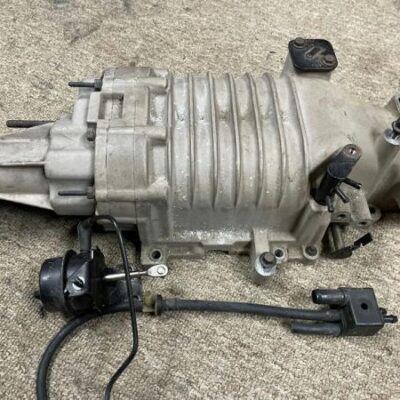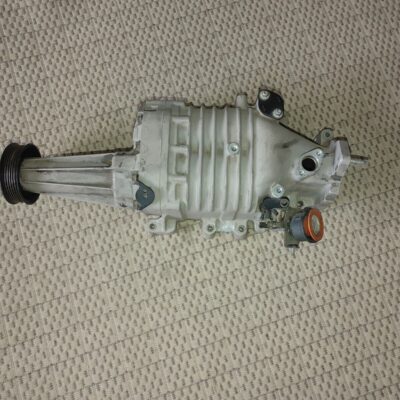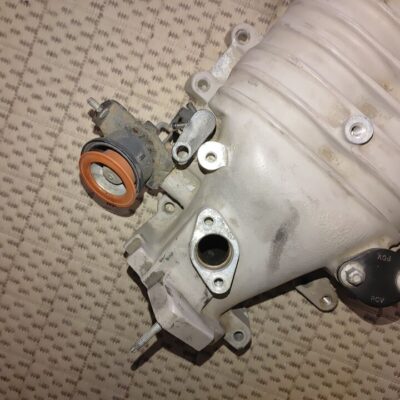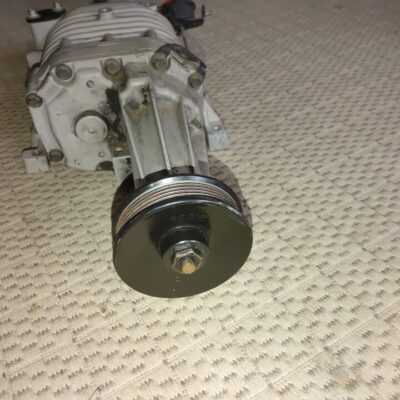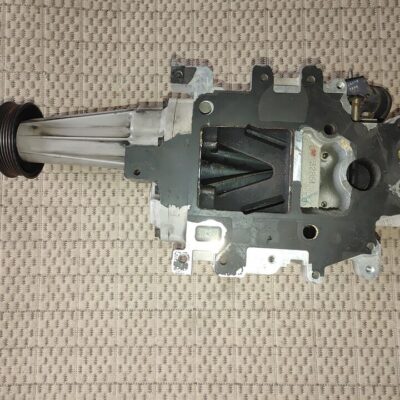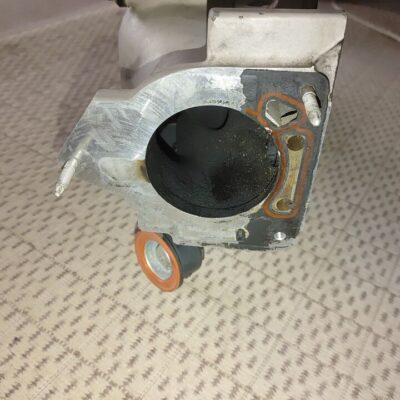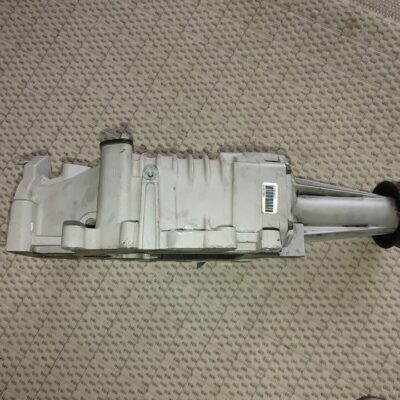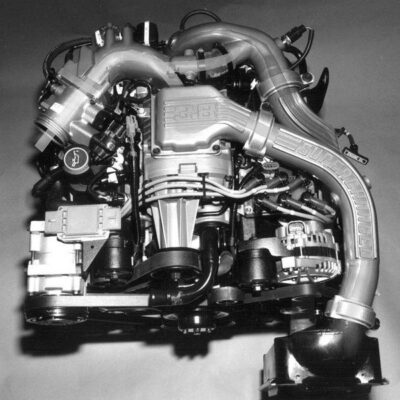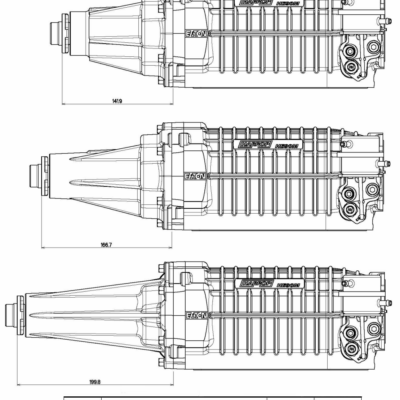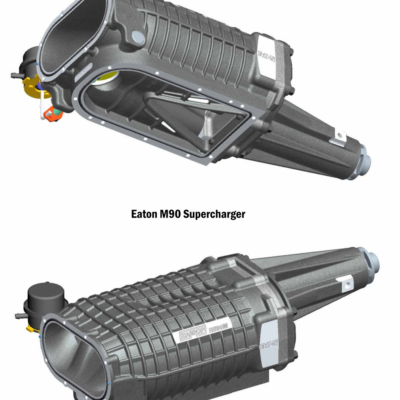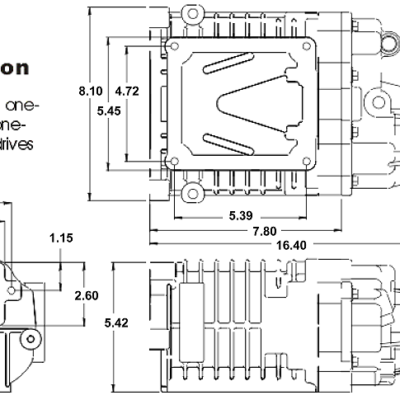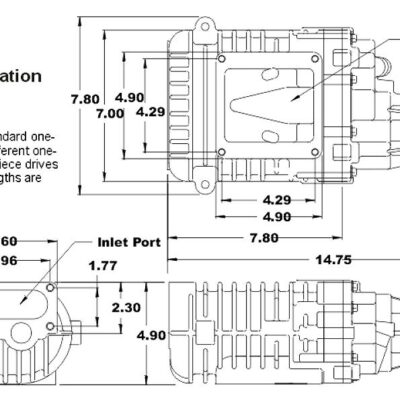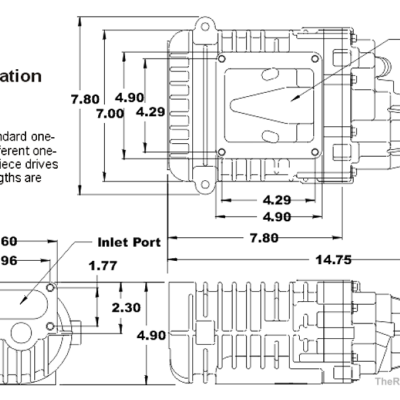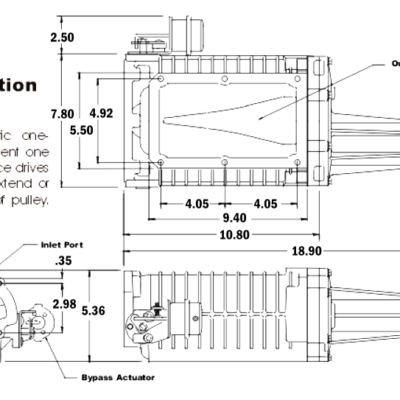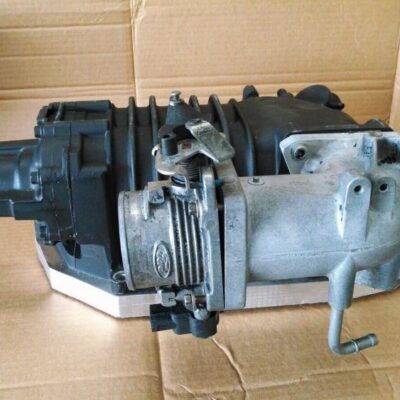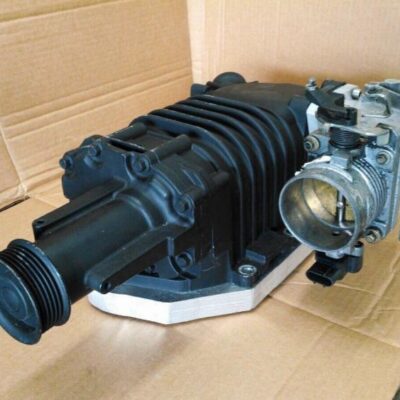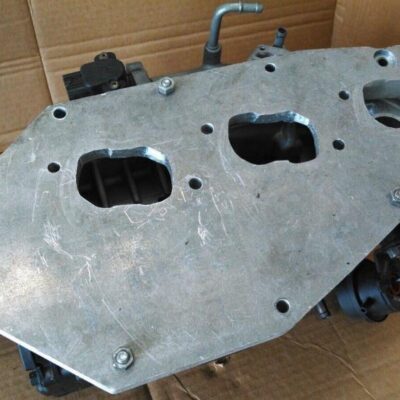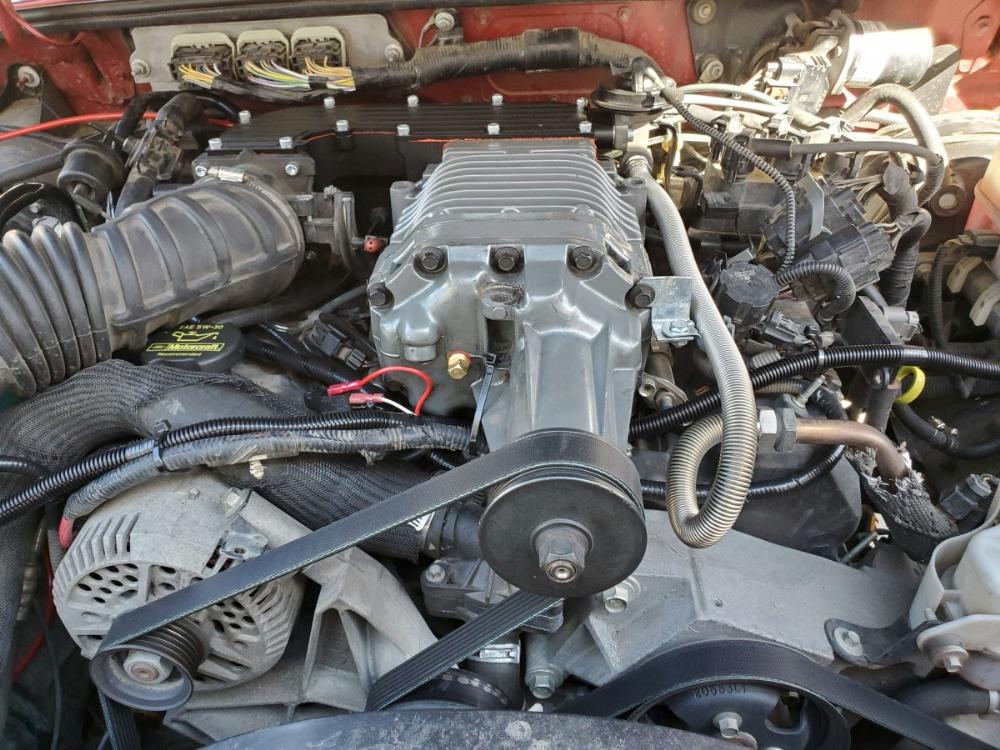
Ford Ranger owners have increased the horsepower of their 4.0 OHV and 4.0 SOHC engines by adding a supercharger. Currently there is only a kit out there for the 4.0 SOHC engine, and you need to provide your own supercharger. Others have made their own custom mounts to install a supercharger on their 4.0 OHV engine.
See: Supercharging A Ford Ranger 4.0 OHV V6
These setups typically use an Eaton supercharger from a donor vehicle. You’ll need to decide which supercharger you want to use, and what vehicles to find it on. Hopefully this page will help give you more insight into your supercharger options.
In theory you can make any supercharger work. The biggest thing to consider is the packaging around it. You’ll need to make sure that you can get the belt aligned properly and adapt the supercharger onto the intake manifold correctly. It will also need to fit under the hood.
Most of the superchargers that you’re going to find are going to come off of a front-wheel-drive vehicle that was mounted sideways in the engine bay.
Eaton Superchargers:
Eaton manufactures highly engineered, roots-type positive displacement superchargers. The Eaton supercharger increases torque across the entire operating range without compromising drivability or emissions. This allows vehicle manufacturers the option of using smaller, more economical 4- and 6-cylinder engines, without perceived loss in power train performance. Additionally, the supercharger incorporates a bypass system to reduce air handling losses when boost is not required, resulting in better fuel economy. Typical applications are on engines with displacements of 1.8L to 5.3L.
- M45 – The Eaton Supercharger Model 45 is designed for 2.0L to 3.0L passenger car and light truck engines, but may also be suitable for other engine sizes, depending on total system performance requirements.
- M62 – The Eaton Supercharger Model 62 is designed for 2.5L to 4.0L passenger car and light truck engines, but may also be suitable for other engine sizes, depending on total system performance requirements.
- M90 – The Eaton Supercharger Model 90 is designed for 3.0L to 5.0L passenger car and light truck engines, but may also be suitable for other engine sizes, depending on total system performance requirements.
- M112 – The Eaton Supercharger Model 112 is designed for larger passenger car and light truck engines, but may also be suitable for other engine sizes, depending on total system performance requirements.
Eaton M62 Supercharger:
The Eaton Model 62 supercharger was engineered for 2.0L to 4.0L passenger cars and light truck engines. It was designed as a compact, flexible supercharger for increased power without adversely affecting fuel economy. The M62 has proven to be suitable for other engine sizes depending on overall system requirements.
- Most installations see a realistic 40% plus increase in power output.
- Eaton Superchargers will work effectively in any orientation (Flat, upside down, on edge).
- Different length drives are available, giving the custom installer flexibility in the placement of the supercharger.
- The M62 is available for counter rotating engines (2 Piece Drive).
- A Bypass Valve is included with every supercharger, two different Bypass Valves are available, one that mounts directly on the intake port, and one for remote mount.
Specifications:
- Displacement per revolution, Liters: 1.016
- Displacement per revolution, Cubic Inches: 62
- Sustained RPM: 14,000
- Max boost: 10 psi / 460 cfm @ 14,000 rpms
- Horsepower gain: 7 hp @ 4,000 rpms, 36 hp @ 14,000 rpms
- Operating temperature: 135° @ 4,000 rpms, 180° @ 14,000 rpms
- Pulley size 3.25-inches
- Aftermarket pulley sizes: 2.4, 2.5, 2.6, 2.7, 2.8, 2.9, 3.0, 3.1, 3.2, and 3.3 inches
Source for aftermarket pulleys: Pulley Boys
Where Used / Generation:
- 1991-1993 Buick Park Avenue & Riviera 3.8L V6 / Generation II
- 1994-1995 Buick Park Avenue & Riviera 3.8L V6 / Generation III
- 1998-2002 Nissan Frontier 3.3L V6 / Generation IV
- 1998-2002 Nissan Xterra 3.3L V6 / Generation IV
- 1991-1993 Oldsmobile Eighty-Eight LS 3.8L V6 / Generation II
- 1994-1995 Oldsmobile Eighty-Eight LS & LSS 3.8L V6 / Generation III
- 1991-1993 Oldsmobile Nighty-Eight 3.8L V6 / Generation II
- 1994-1995 Oldsmobile Eighty-Eight 3.8L V6 / Generation III
- 1992-1995 Oldsmobile Eighty-Eight 3.8L V6 / Generation III
- 1991-1993 Pontiac Bonneville SLE, SSE, SSEi 3.8L V6 / Generation II
- 1994-1995 Pontiac Bonneville SLE, SSE, SSEi 3.8L V6 / Generation III
- 2005-2008 Chevy Cobalt SS Ecotech 2 liter / Generation V
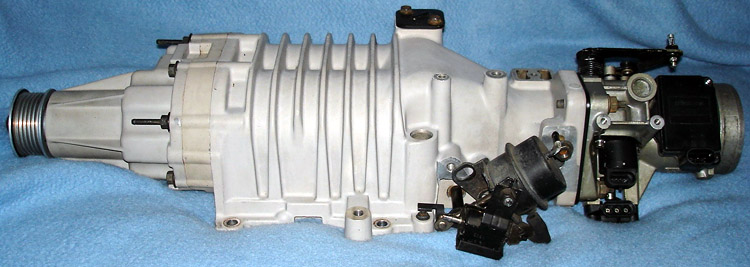
Eaton M62 Generation II
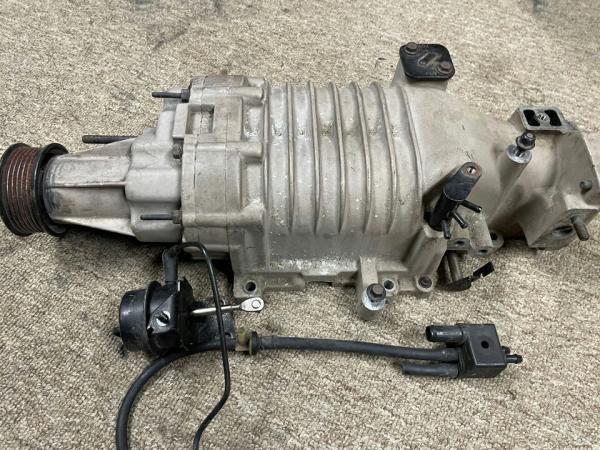
Eaton M62 Generation III
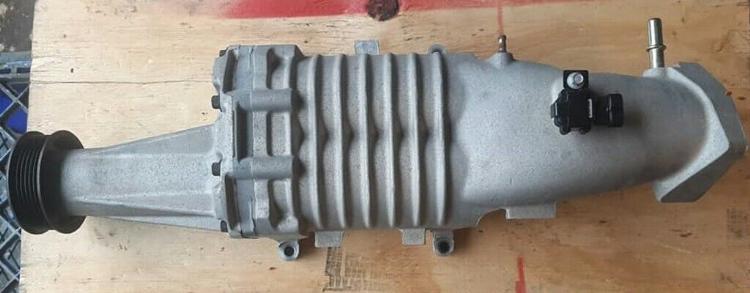
Eaton M62 Generation V
Eaton M90 Supercharger:
The Eaton Model 90 supercharger was engineered for 3.0L to 5.7L passenger cars and light truck engines. It was designed as a compact, flexible supercharger for increased power without adversely affecting fuel economy. The M90 has proven to be suitable for other engine sizes depending on overall system requirements.
- Most installations see a realistic 40% plus increase in power output.
- Eaton Superchargers will work effectively in any orientation (Flat, upside down, on edge).
- Different length drives are available, giving the custom installer flexibility in the placement of the supercharger.
- The M90 is available for counter rotating engines (2 Piece Drive).
- A Bypass Valve is included with every supercharger, two different Bypass Valves are available, one that mounts directly on the intake port, and one for remote mount.
Specifications:
- Displacement per revolution, Liters: 1.475
- Displacement per revolution, Cubic Inches: 90
- Sustained RPM: 12,000
- Max boost: 10 psi / 520 cfm @ 12,000 rpms
- Horsepower gain: 10 hp @ 4,000 rpms, 42 hp @ 12,000 rpms
- Operating temperature: 160° @ 4,000 rpms, 190° @ 12,000 rpms
- Pulley size: 3.8-inches
- Aftermarket pulley sizes: 3.0, 3.2, and 3.4 inches.
- The stock pulley on a GM M90 was a 3.8 w/ a 7″ harmonic balancer. That equates to ~1.82 ratio.
- The same setup on a Ford 4.0L w/ a 6″ harmonic balancer equates to ~1.51 ratio.
- Getting to the 1.82 ratio on the 4.0L requires ~3.2 pulley.
Source for aftermarket pulleys: Pulley Boys
Eaton M90 Variations:
The third gen M90 first appeared in late 1996 on some Bonneville’s, in conjunction with the introduction of the Series II engine. It’s real introduction appeared in 1997 on the Grand Prix GTP, Bonneville SSEi, Regal GS and a few more obscure models (i.e. Park Avenue Ultra again). Consider this to be manifold variation #1.
The third gen M90 was changed slightly for 1998 (minor changes such as vacuum ports), and then remained the same through 2003 in the same vehicles, all of which came stock with the 3800 Series II engine and 4T65E-HD transaxle. This same blower was also used in the 2004 and 2005 Impala SS and Monte Carlo SS with the Series II engine. All these vehicles still used intake manifold variation #1.
The fifth gen M90 was developed in 1996 but didn’t appear in production until the 2004 and 2005 Grand Prix GTP and GTP CompG with Series III 3800 engine and 4T65E-HD transaxle. For 2006 and 2007, the last of these blowers were used in the Grand Prix GT. All these vehicles used intake manifold variation #2. The inlet port was shifted slightly forward and enlarged, and at least one mounting bolt was moved.
There was a very slight intake manifold and gasket change in mid-year 2005. This only effects a handful of cars and would be intake manifold variation #3. The mounting holes and outlet location did not change, only the coolant sealing ring style was tweaked.
Where Used / Generation:
- 1996-2004 Buick Riviera 3.8L V6 / Generation III
- 1996-2004 Buick Regal GS 3.8L V6 / Generation III
- 1996-1999 Buick Riviera 3.8L V6 / Generation III
- 2004-2005 Chevrolet Impala SS 3.8L V6 / Generation III
- 2004-2005 Chevrolet Monte Carlo SS 3.8L V6 / Generation III
- 1989-1993 Ford Thunderbird Super Coupe 3.8L V6 / Generation III
- 1996-2004 Holden Commodore VS VT VX VY 3.8L V6 / Generation III
- 1995-1997 Jaguar X300 4.0L I-6 / Generation III
- 1989-1990 Mercury Cougar XR-7 3.8L V6 / Generation III
- 1996-1999 Oldsmobile Eighty-Eight LSS 3.8L V6 / Generation III
- 1996-2003 Pontiac Bonneville SSEi 3.8L V6 / Generation III
- 2004-2007 Pontiac Grand Prix GT 3.8L V6 / Generation V
- 1997-2003 Pontiac Grand Prix GTP 3.8L V6 / Generation III
- 2004-2007 Pontiac Grand Prix GTP 3.8L V6 / Generation V
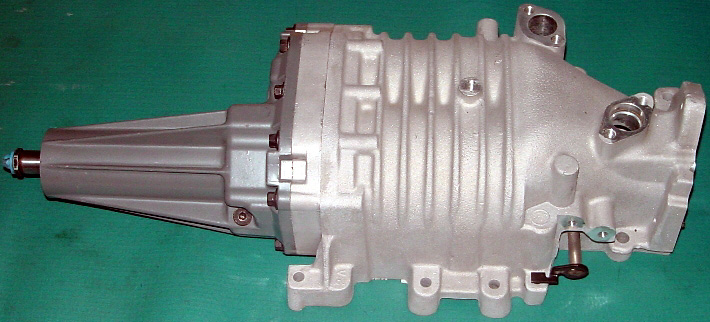
Eaton M90 Generation III
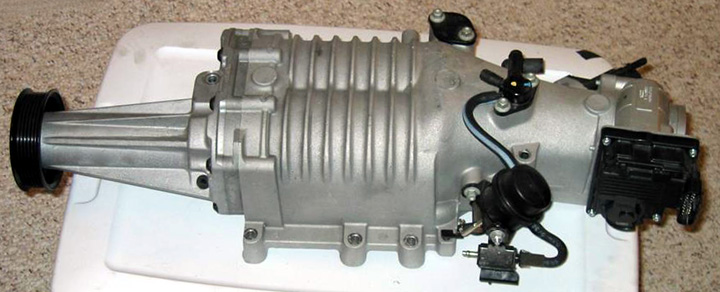
Eaton M90 Generation V
Eaton M62 VS Eaton M90
The GM 3800 (3.8) M62 is 17.7-inches and the M90 is 17-inches. The M62 has a shorter snout than the M90.
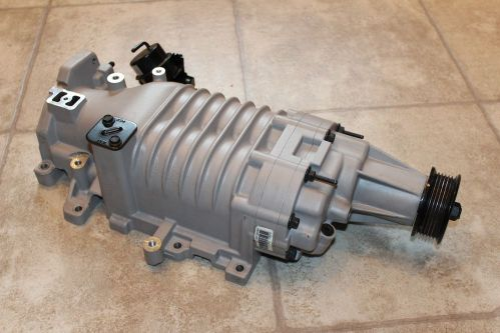
Eaton M62
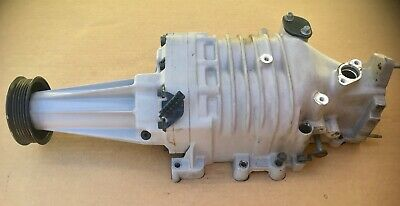
Eaton M90
The M90 can make more power with less boost.
Ford Thunder Super Coupe Eaton M90:
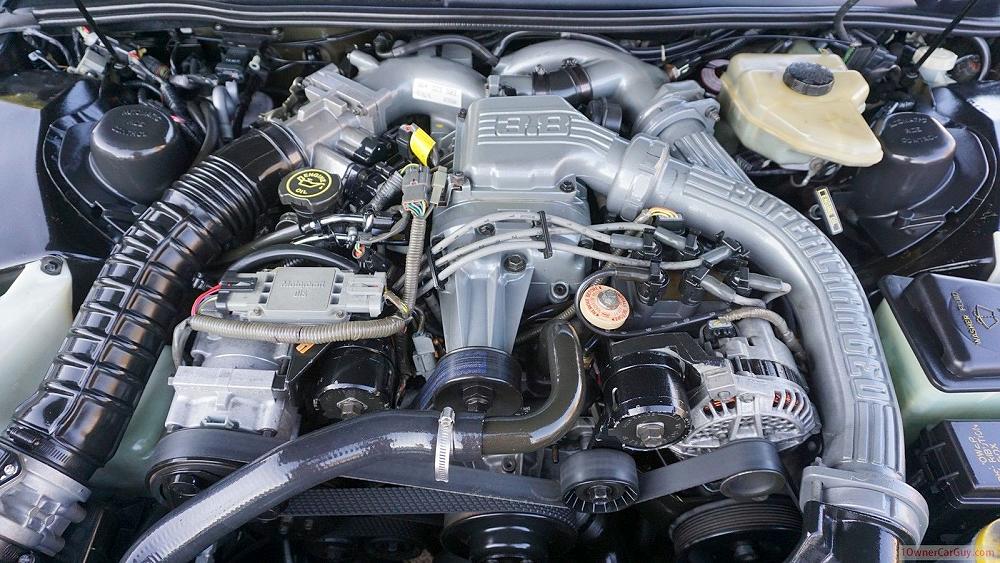
From 1989-1995 the Ford Thunderbird offered a Super Coupe option that used a 3.8L V6 engine that used an Eaton M90 Roots-type supercharger, intercooler and computer-controlled distributorless ignition. With 12-psi maximum boost, output was 210 hp at 4000 rpm and 315 lb-ft of torque at 2600 rpm. (Numerous upgrades boosted output to 230 hp and 330 lb.-ft. in the 1994–1995 model).
The impressive torque curve is why the Super Coupes offered such impressive acceleration. With a peak power output that occurred at just 4,000 rpm and torque peak some 1,000 rpm earlier, these motors offered diesel-like torque curves. Unfortunately, placing the emphasis on the impressive low-speed power production meant the supercharged 3.8L was not rev-happy. There was little sense in revving the motor to 5,500 rpm or beyond since the peak power occurred at just 4,000 rpm.
You can find more specifications for the Eaton M90 supercharger in the section above.
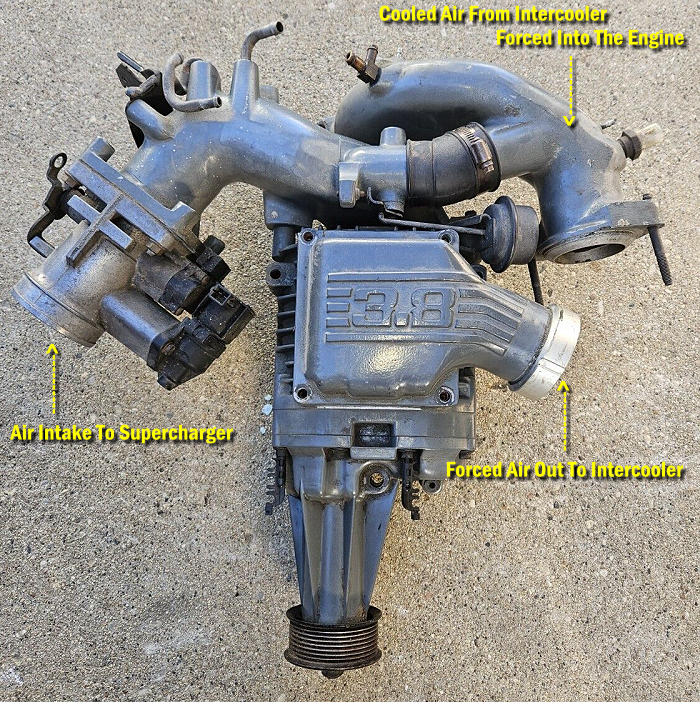
Eaton M112 Supercharger:
The Magnuson/Eaton Model MP112, 4th Generation is a “State of the Art” supercharger, engineered for 4.6 to 6.0 liter passenger cars and light truck engines. It was designed as a compact, flexible supercharger for increased power with original equipment quietness and reliability without adversely affecting fuel economy. The M112 has proven itself in a number of original equipment and aftermarket applications on a variety of engine sizes. This latest version has taken this versatility to the next level with “S Port” technology and a built-in bypass for unparalleled performance.
- Most installations see a realistic 40% plus increase in power output.
- Magnuson/Eaton Superchargers will work effectively in any orientation (Flat, upside down, on edge).
- Different length drives are available, giving the custom installer flexibility in the placement of the supercharger.
- The bypass actuator can be located in any of 12 possible locations.
Specifications:
- Displacement per revolution, Liters: 1.835
- Displacement per revolution, Cubic Inches: 112
- Sustained RPM: 12,000 (max 14,000)
- Stock boost: 8 psi
- Max boost: 15 psi
- Horsepower gain: Roughly 16 rwhp per psi of boost
- Operating temperature: N/A
- Pulley size: 3.65 inches
- Aftermarket pulley sizes: 3.2, 3.1, 3.0, 2.9, and 2.8 inches
Where Used / Generation:
- 1998-2003 Jaguar XJR 4.0L V8 / Generation IV
- 2004-2004 Jaguar XJR 4.2L V8 / Generation V
- 1999-2002 Jaguar XKR 4.0L V8 / Generation IV
- 2004-2004 Jaguar XKR 4.2L V8 / Generation V
- 2004-2004 Jaguar S Type R 4.2L V8 / Generation V
- 2002-2004 Ford F-150 Harley Davidson 5.4L V8 / Generation IV
- 1999-2004 Ford F-150 Lightning 5.4L V8 / Generation IV
- 2002-2004 Ford Mustang Cobra 5.4L V8 / Generation IV
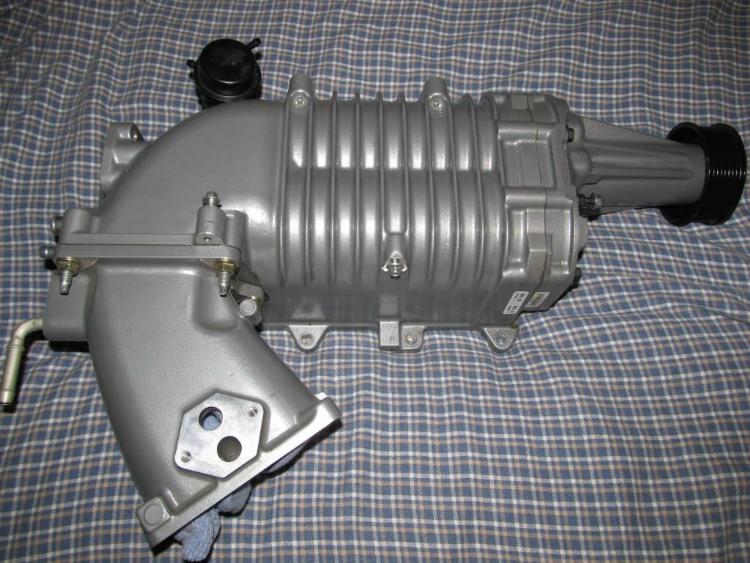
How Superchargers Work:
An engine is nothing more than an air pump at heart. The size of the engine directly relates to how much air the engine can displace. A 4.0-liter engine is designed to suck in 4.0 liters of air.
To that affect, a naturally aspirated engine relies on the vacuum created by the piston on the intake stroke to draw fuel and air into the cylinders. It’s an ingenious yet simple concept, but it’s not perfect as air can be a funny thing, and atmospheric conditions like temperature, elevation, and even humidity can prevent an engine from operating at its full potential.
This is where a thing called “volumetric efficiency” comes into play. Volumetric efficiency simply refers to the amount of air that an engine is actually displacing versus how much it’s supposed to. A volumetric efficiency, or VE, of 88-95% is about the average for 2-valve engines like the aforementioned 7.2-liter. That means that the 7.2-liter engine is typically only able to displace 6.3- 6.8 liters of air, or 387-418 cubic inches, under normal conditions.
Enter the supercharger. A supercharger simply works to increase volumetric efficiency. It forces air into the cylinders instead of relying on a vacuum. That helps the engine to hit 100% VE and, sometimes, even more. This will allow you to burn more fuel and create more power. It also positively affects the effective compression ratio that helps increase the bang the mixture makes upon ignition.
